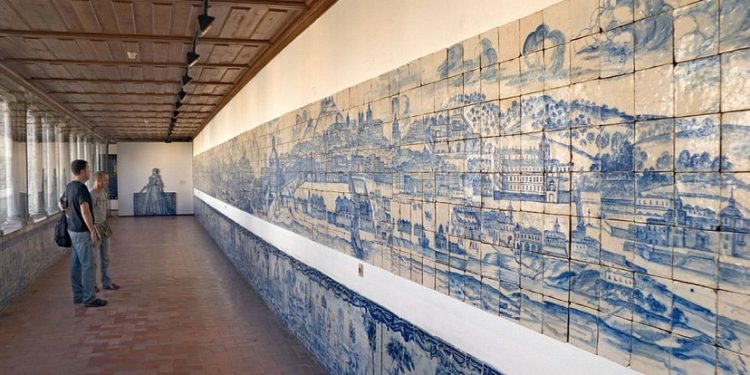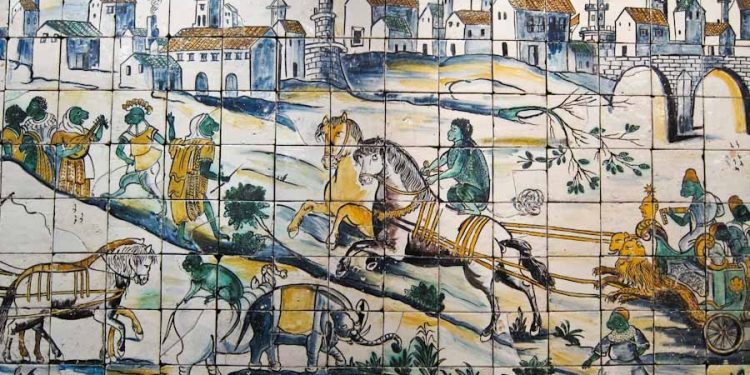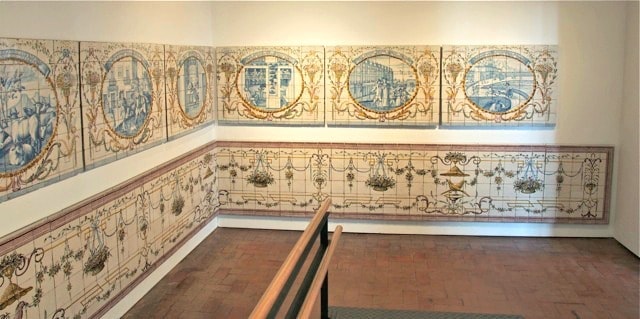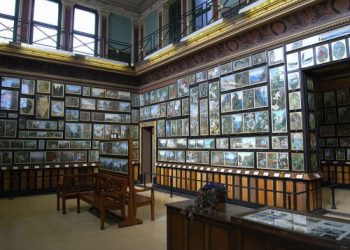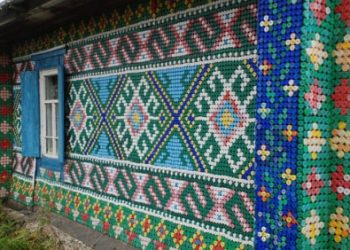Many of the buildings in Lisbon, Portugal are decorated with colourful and intricate tiles known as azulejos, which comes from the Arabic word az-zulayj meaning “polished stone”. So it shouldn’t come as a surprise that the city has a museum dedicated to these tiles called the Museu Nacional do Azulejo, located in the 16th century Convent of Madre de Deus. The museum is the only one of its kind in the world, displaying over five-hundred years of Portuguese history and craftsmanship.
The Moors brought this artwork to the Iberian Peninsula but the earliest tiles were painted according to Islamic Law so they did not show human figures and were primarily geometric designs. That changed over time as Christianity took over. One of the museum’s prized pieces is a 1300-tile panoramic panel called “The Great View of Lisbon” that captures the city before the earthquake of 1755. Besides the church and the exhibits, there is also a café full of food-related tiles (surprise..surprise). In Lisbon it’s pretty difficult to escape the beauty of azulejos so why not visit a museum dedicated to them?
